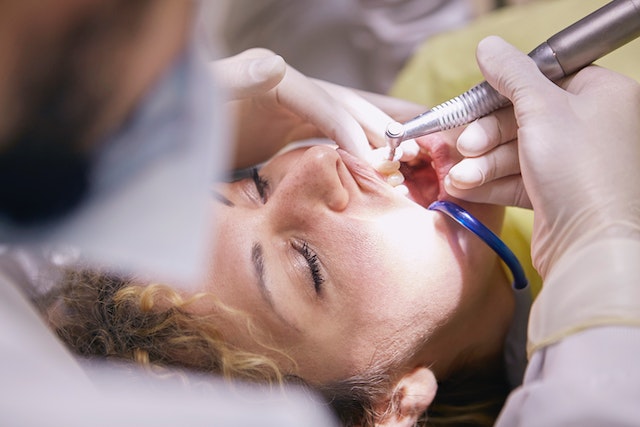Dental bridges are a common solution for people who have lost one or more teeth. The procedure involves attaching a replacement tooth, or pontic, to the adjacent teeth using dental crowns. While dental bridges can help restore the appearance and function of a person’s teeth, many people are concerned about the cost of the procedure.
The cost of dental bridges can vary depending on a number of factors, including the type of bridge, the materials used, and the dentist’s experience and location. Generally, dental bridges can cost anywhere from $500 to $1,200 per tooth. This can make the procedure expensive for many people, especially if they need multiple teeth replaced.
Key Takeaways
- Dental bridges are a common solution for people who have lost one or more teeth.
- The cost of dental bridges can vary depending on a number of factors, including the type of bridge, the materials used, and the dentist’s experience and location.
- Dental bridges can cost anywhere from $500 to $1,200 per tooth.
Understanding Dental Bridges
Dental bridges are a common solution for replacing missing teeth. They are prosthetic devices that are anchored in place using the teeth on either side of the gap. Bridges can be used to replace one or more missing teeth, and they come in several different types.
Types of Dental Bridges
There are several types of dental bridges, including traditional fixed bridges, cantilever bridges, and resin-bonded bridges (also known as Maryland bridges). Each type has its unique advantages and disadvantages, and the best option for an individual will depend on their specific needs.
- Traditional Fixed Bridge: This type of bridge is the most common and consists of artificial teeth (pontics) that are anchored in place using dental crowns on the adjacent teeth. It is a durable and long-lasting option.
- Cantilever Bridge: This type of bridge is similar to a traditional fixed bridge but is anchored in place using only one adjacent tooth. It is typically used when there is only one tooth available to anchor the bridge.
- Resin-Bonded Bridge: This type of bridge is also known as a Maryland bridge and is anchored in place using a metal or porcelain framework that is bonded to the back of the adjacent teeth. It is a less invasive option and is often used to replace missing front teeth.
- Implant-Supported Bridge: This type of bridge is anchored in place using dental implants instead of adjacent teeth. It is a more invasive option but provides a more secure and long-lasting solution.
Dental Bridge Cost
The cost of a dental bridge can vary depending on several factors, including the type of bridge, the number of missing teeth, and the materials used. On average, a traditional fixed bridge can cost anywhere from $500 to $1,200 per tooth. Implant-supported bridges can cost significantly more, with a single implant and crown costing between $3,000 and $5,000.
It is essential to note that dental insurance may cover a portion of the cost of a dental bridge, but coverage varies depending on the individual plan. Additionally, some dental offices offer financing options to help make the cost of a bridge more manageable.
Overall, dental bridges are an effective and long-lasting solution for replacing missing teeth. By understanding the different types of bridges and the associated costs, individuals can make informed decisions about their dental care.
Materials Used in Dental Bridges
Dental bridges are a popular solution for missing teeth. They are designed to fill the gap between two teeth and restore the natural look and functionality of the teeth. Dental bridges are made of various materials, each with unique properties and costs.
Porcelain
Porcelain is a common material used in dental bridges. It is a type of ceramic that is strong, durable, and stain-resistant. Porcelain dental bridges are known for their natural appearance, as they can be color-matched to the surrounding teeth. They are also biocompatible, meaning they are safe for use in the mouth.
Metal
Metal is another material used in dental bridges. Metal bridges are strong and durable, making them a good choice for back teeth. They are also less expensive than other materials. However, metal bridges are not as aesthetically pleasing as porcelain bridges, as they are visible when the patient smiles or talks.
Metal Alloy
Metal alloy is a combination of metals that is used in dental bridges. It is a strong and durable material that is resistant to wear and tear. Metal alloy bridges are less expensive than porcelain bridges, but they are also less aesthetically pleasing.
Composite Resin
Composite resin is a tooth-colored material that is used in dental bridges. It is a good choice for front teeth, as it can be color-matched to the surrounding teeth. Composite resin bridges are less expensive than porcelain bridges, but they are not as strong or durable.
Zirconia
Zirconia is a type of ceramic that is used in dental bridges. It is a strong and durable material that is resistant to wear and tear. Zirconia bridges are known for their natural appearance, as they can be color-matched to the surrounding teeth. They are also biocompatible, meaning they are safe for use in the mouth.
Bridge Material
The choice of bridge material depends on various factors, including the location of the missing tooth, the patient’s budget, and the patient’s aesthetic preferences. Porcelain bridges are a good choice for front teeth, while metal or metal alloy bridges are a good choice for back teeth. Composite resin bridges are a good choice for patients on a budget.
Dental Bridge Material
The choice of dental bridge material is an important decision that should be made in consultation with a dentist. A dentist can help patients choose the best material for their needs and budget.
Dental Bridge Materials
There are various dental bridge materials available, each with unique properties and costs. Patients should discuss their options with a dentist to determine the best material for their needs.
Metal Wings
Metal wings are a type of dental bridge that uses metal wings to attach the bridge to the surrounding teeth. Metal wings are a good choice for patients who have healthy teeth surrounding the missing tooth.
Procedure for Dental Bridge Placement
The procedure for dental bridge placement involves several steps, including x-rays, tooth extraction (if necessary), and the placement of a temporary bridge. In some cases, a bone graft may also be necessary to provide a stable foundation for the bridge.
Before the dental bridge procedure, the dentist will take x-rays of the patient’s teeth and gums to assess the condition of the surrounding teeth and gums. If there is any decay or damage to the teeth, the dentist may need to perform a tooth extraction before placing the bridge.
Once the extraction is complete, the dentist will place a temporary bridge to protect the area and allow for healing time. The temporary bridge will be removed once the permanent bridge is ready to be placed.
During the dental bridge procedure, the dentist will prepare the surrounding teeth by reshaping them to accommodate the bridge. An impression of the teeth will then be taken and sent to a dental laboratory where the bridge will be custom-made.
Once the bridge is ready, the dentist will place it and make any necessary adjustments to ensure a proper fit. The patient will be given instructions on how to care for the bridge and may need to schedule follow-up appointments to ensure proper healing and maintenance.
Overall, the dental bridge procedure is a common and effective way to replace missing teeth. While it may involve some surgery and healing time, the end result is a natural-looking and functional smile.
Types of Dental Bridges
Dental bridges are used to replace missing teeth and restore the functionality of the mouth. They come in different types, each with its own advantages and disadvantages. Here are some of the most common types of dental bridges:
Fixed Bridges
Fixed bridges are the most common type of dental bridge. They are typically made of porcelain or ceramic, and are anchored to adjacent teeth with dental crowns. Fixed bridges are permanent and cannot be removed. They are a good option for patients who have healthy teeth adjacent to the gap.
Removable Bridges
Removable bridges, also known as partial dentures, are designed to be removed and cleaned daily. They are typically made of acrylic, and are attached to the remaining teeth with metal clasps. Removable bridges are a good option for patients who have lost several teeth but do not want to undergo surgery.
Implant-Supported Bridges
Implant-supported bridges are anchored to dental implants, which are surgically placed in the jawbone. This type of bridge is a good option for patients who have lost multiple teeth and have good bone density. Implant-supported bridges are more expensive than other types of bridges, but they are also more durable and long-lasting.
Cantilever Bridges
Cantilever bridges are anchored to only one tooth, rather than two adjacent teeth. This type of bridge is a good option for patients who have only one healthy tooth adjacent to the gap.
Maryland Bridges
Maryland bridges, also known as resin-bonded bridges, are anchored to adjacent teeth with metal or porcelain wings. This type of bridge is a good option for patients who have healthy teeth adjacent to the gap but do not want to undergo surgery.
Overall, the type of dental bridge that is best for a patient depends on their individual needs and circumstances. A dentist can help determine which type of bridge is the right choice.
Dental Bridge vs. Other Solutions
When it comes to replacing missing teeth, there are several options available. Dental bridges are one solution, but there are also other options to consider. Here, we will compare dental bridges to some of the other options available.
Crowns
Crowns are a type of dental restoration that covers the entire tooth. They are often used to repair damaged teeth, but they can also be used to anchor a dental bridge in place. While crowns can be a good option for some patients, they do require the removal of some of the tooth’s natural structure. This can weaken the tooth and make it more susceptible to decay in the future.
Dental Implants
Dental implants are another option for replacing missing teeth. They involve surgically placing a small post into the jawbone, which serves as an anchor for a replacement tooth. Dental implants are a popular option because they are durable and long-lasting. However, they can be more expensive than other options, and the surgical procedure can be more invasive.
Partial Dentures
Partial dentures are removable appliances that are used to replace one or more missing teeth. They are typically held in place with clasps that attach to adjacent teeth. Partial dentures can be a good option for patients who are missing several teeth but do not want to undergo surgery. However, they can be uncomfortable and may require frequent adjustments.
Full Dentures
Full dentures are removable appliances that are used to replace all of the teeth in a patient’s mouth. They are typically held in place with suction or adhesive. Full dentures can be a good option for patients who have lost all of their teeth, but they can be uncomfortable and may require frequent adjustments.
In summary, dental bridges are just one option for replacing missing teeth. Patients should consider all of their options and work with their dentist to determine which solution is best for their individual needs.
Cost of Dental Bridges
Dental bridges are a common solution for people who have one or more missing teeth. They are designed to fill the gap left by the missing teeth and are anchored to the surrounding teeth for stability. However, the cost of dental bridges can vary depending on a number of factors.
The average cost of a dental bridge can range from $500 to $1,200 per tooth. This means that a typical three-unit bridge can cost between $1,500 and $3,600. However, the actual cost of a dental bridge will depend on a number of factors, including the type of bridge, the materials used, and the location of the dental practice.
Most dental insurance plans will cover a portion of the cost of dental bridges, but the amount of coverage will vary depending on the plan. Some plans may cover up to 50% of the cost, while others may only cover a small portion. It is important to check with your insurance provider to determine what your coverage will be.
For those without dental insurance, there are options for reducing the cost of dental bridges. Some dental practices, such as Aspen Dental, offer financing options that allow patients to pay for their treatment over time. Additionally, some practices may offer discounts for patients who pay in full at the time of their treatment.
It is also worth noting that Medicaid and Medicare may cover the cost of dental bridges in certain situations. For example, Medicaid may cover the cost of dental bridges for children and young adults under the age of 21, while Medicare may cover the cost for those who have a medical condition that makes it difficult to eat or speak.
In summary, the cost of dental bridges can vary depending on a number of factors, but most dental insurance plans will cover a portion of the cost. For those without insurance, financing options and discounts may be available, and Medicaid and Medicare may also provide coverage in certain situations.
Factors Influencing Dental Bridge Cost
The cost of a dental bridge can vary depending on several factors. Here are some of the factors that can influence the cost of a dental bridge:
Number of Teeth
The number of teeth that need to be replaced with a dental bridge will affect the cost. A single tooth bridge will be less expensive than a bridge that replaces multiple teeth.
Exam
An exam is typically required before a dental bridge can be placed. The cost of the exam may be included in the overall cost of the bridge or may be an additional fee.
Material Used
The material used to make the dental bridge can affect the cost. Porcelain bridges are typically more expensive than bridges made from other materials.
Bridge Material
The type of bridge used can also affect the cost. Traditional bridges are typically less expensive than cantilever bridges or Maryland bridges.
Root Canal
If a root canal is required before the bridge can be placed, this will add to the overall cost.
Three-Unit Bridge
A three-unit bridge, which is used to replace a missing tooth with a bridge that is supported by two adjacent teeth, will be more expensive than a single tooth bridge.
Overall, the cost of a dental bridge will depend on a variety of factors. It is important to talk to a dentist about the options available and the associated costs to determine the best option for your individual needs.
Oral Health and Dental Bridges
Dental bridges are a common and effective solution for replacing missing teeth. They can improve a patient’s oral health and overall quality of life. However, there are several factors to consider when it comes to the cost and risks associated with dental bridges.
One of the primary benefits of dental bridges is that they can prevent future oral health problems. Missing teeth can cause adjacent teeth to shift, leading to bite problems and gum disease. By filling the gap with a bridge, patients can maintain proper alignment and reduce the risk of gum disease.
Good oral hygiene is crucial for maintaining dental bridges and overall oral health. Patients should brush and floss regularly to prevent tooth decay and bacteria buildup around the bridge. Regular dental exams are also important to monitor the health of the bridge and surrounding teeth.
While dental bridges are a permanent solution, there are risks associated with the procedure. The enamel on adjacent teeth may need to be removed to make room for the bridge, which can weaken the teeth and increase the risk of decay. Additionally, the abutments (the teeth that anchor the bridge) may become damaged over time, requiring additional procedures.
Dental bridges can also affect speech and eating. Patients may need to adjust to the feel of the false tooth and may experience difficulty with certain foods. However, most patients adjust to the bridge quickly and can resume normal eating and speaking habits.
In summary, dental bridges can improve oral health and function, but patients should carefully consider the risks and costs associated with the procedure. Good oral hygiene and regular exams are crucial for maintaining the health of the bridge and surrounding teeth.
Advantages and Disadvantages of Dental Bridges
Dental bridges are a common and effective way to replace missing teeth. They are prosthetic teeth that are attached to the surrounding teeth with the help of dental cement. Although dental bridges have several benefits, they also come with a few drawbacks. In this section, we will explore the advantages and disadvantages of dental bridges.
Advantages
1. Improved Chewing
Dental bridges can help improve chewing ability by filling the gap left by missing teeth. This can make it easier to eat a wider variety of foods, which can lead to better nutrition.
2. Aesthetically Pleasing
Dental bridges can be made to match the color and shape of the surrounding teeth, making them a natural-looking replacement for missing teeth. This can help improve the appearance of the smile.
3. Quick and Easy Procedure
Getting a dental bridge is a relatively quick and easy procedure. The process typically involves two visits to the dentist, with the bridge being installed during the second visit.
Disadvantages
1. Prosthetic Teeth
Dental bridges are prosthetic teeth that are not as strong as natural teeth. This means that they may not last as long as natural teeth and may need to be replaced in the future.
2. Front Tooth Bridge
A dental bridge that replaces a front tooth may not look as natural as a dental implant. This is because the bridge may not be able to match the color and shape of the surrounding teeth as well as an implant.
3. Conventional Bridge
A conventional bridge requires the surrounding teeth to be shaved down in order to support the bridge. This can weaken the surrounding teeth and make them more susceptible to decay or damage.
In conclusion, dental bridges have several advantages and disadvantages. They can help improve chewing ability, are aesthetically pleasing, and are a quick and easy procedure. However, they are prosthetic teeth, may not look as natural as a dental implant, and can weaken the surrounding teeth. It is important to weigh the pros and cons of dental bridges before deciding if they are the right choice for you.
Frequently Asked Questions
What is the average cost of a dental bridge?
The cost of a dental bridge can vary depending on several factors, such as the type of bridge, the materials used, and the location of the dentist. On average, a traditional dental bridge can cost between $500 and $1,200 per tooth. However, the cost can increase significantly if additional procedures, such as extractions or root canals, are required.
Are there any affordable dental bridge options available?
Yes, there are affordable dental bridge options available. For example, a resin-bonded bridge, also known as a Maryland bridge, is a less expensive option that can cost between $250 and $550 per tooth. This type of bridge is typically used for front teeth and may not be suitable for larger gaps.
How long can I expect a dental bridge to last?
A dental bridge can last between 5 and 15 years, depending on the type of bridge, the materials used, and how well it is cared for. Good oral hygiene practices, such as brushing and flossing regularly, can help prolong the life of a dental bridge.
What are the benefits of getting a dental bridge?
A dental bridge can help restore the appearance and function of missing teeth. It can also help prevent the remaining teeth from shifting out of position and causing further dental problems. Additionally, a dental bridge can improve speech and chewing ability.
What are the potential drawbacks of getting a dental bridge?
One potential drawback of getting a dental bridge is that it may require altering the adjacent teeth to support the bridge. This can weaken the teeth and make them more susceptible to decay and other dental problems. Additionally, a dental bridge may not be as durable as other tooth replacement options, such as dental implants.
Are there any cheaper alternatives to getting a dental bridge?
Yes, there are cheaper alternatives to getting a dental bridge. For example, removable partial dentures can be a more affordable option for replacing missing teeth. However, they may not be as comfortable or natural-looking as a dental bridge. Another option is to leave the gap untreated, but this can lead to further dental problems down the road.





